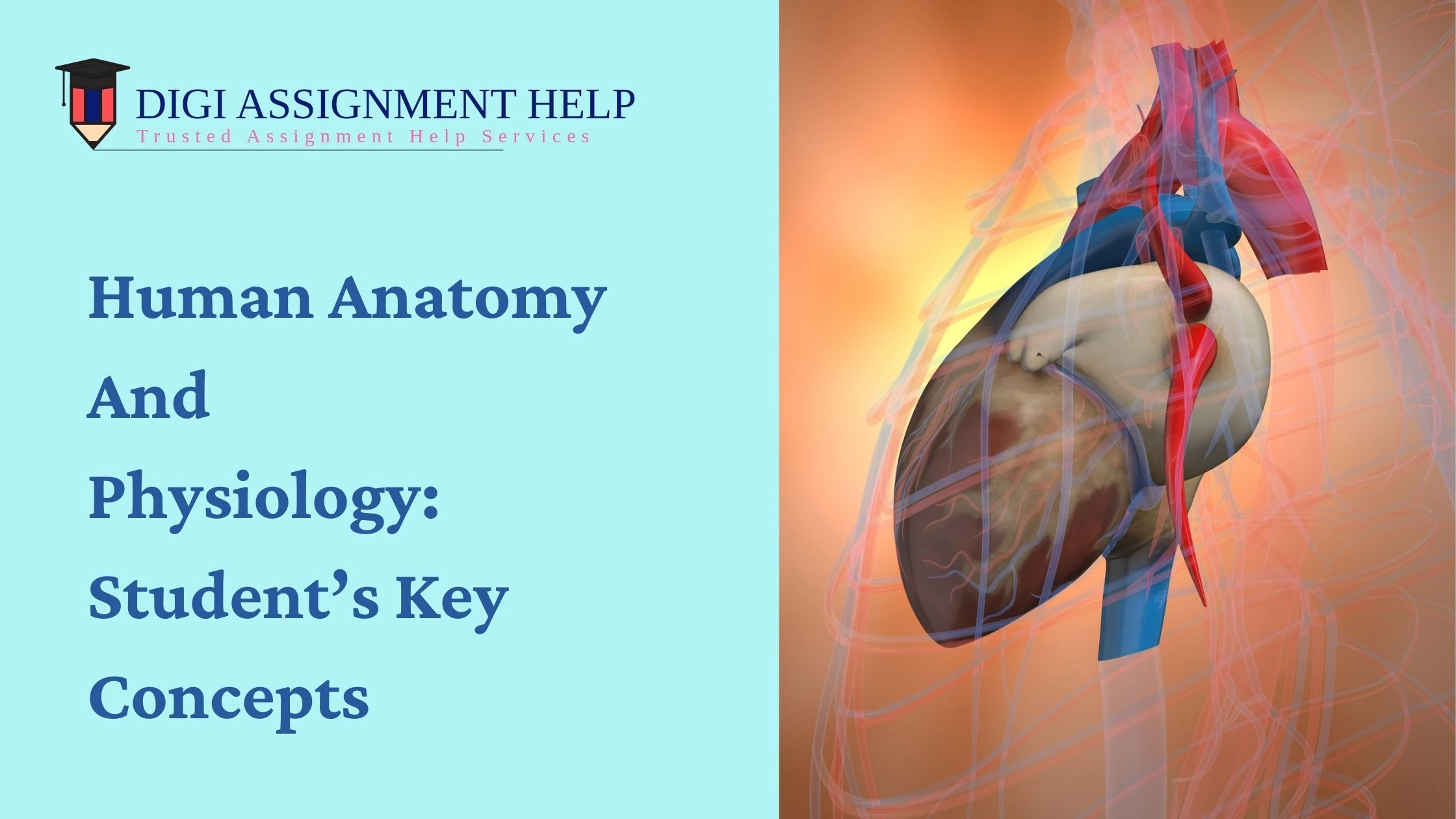Human Anatomy and Physiology: Students’ Key Concepts
 24-Jul-2024 08:07 AM
24-Jul-2024 08:07 AM

Human anatomy and physiology are fundamental for a career in the health and medical field. It forms the basis of knowledge that enables the diagnosis and treatment of diseases. It also helps in understanding the mechanisms of the human body and contributes to medical advancements.
Thus, knowledge of these subjects is essential for students in Australia. The concepts explained below may help them in their further education and work.
1. The Hierarchical Structure of the Human Body
The first thing an anatomy and physiology student learns is the hierarchical organization of the human body. This hierarchy is from the molecular level of chemicals to the total organism level.
-
Chemical Level: Molecules are made up of atoms and these are the basic structures in cells.
-
Cellular Level: They are structural and functional units of the body. Each cell is specialized to perform a certain function.
-
Tissue Level: Tissues are groups of similar cells that have a similar function to perform. There are four primary types of tissues: epithelial tissue, Connective tissue, Muscle tissue, and Nervous tissue.
-
Organ Level: Organs are parts of the body that are made of at least two types of tissues. Each is of a different class with specific roles to play in the body.
-
Organ System Level: Organs working together form systems. Some of these systems include digestive, respiratory, and circulatory systems.
-
Organism Level: The person and body unit with all its functions working in harmony.
It is necessary to recognize that the human body has a hierarchy. Such an understanding will help to decode the interrelations between the body’s constituent elements.
2. Homeostasis: The Body's Balance
Homeostasis is the process by which systems within the body try to maintain a stable internal environment. This happens despite the exterior conditions. This concept is vital in physiology as it explains how various systems work together to sustain life.
-
Negative Feedback Mechanisms: Processes that revert a deviation from the set point. (e.g., temperature regulation of the body).
-
Positive Feedback Mechanisms: Enhance or magnify changes (e.g. clotting of blood).
Homeostasis is important for all physiological processes to take place in the body. It is therefore pertinent that students with anatomy assignments learn about it.
3. Major Organ Systems
The human body consists of many systems made of organs with specific tasks. Here are some of the key systems:
-
Integumentary System: Consists of the skin, hair, and nails. It also serves as a shield for the body and accredits it with the function of thermoregulation.
-
Skeletal System: Bones and joints. It provides structure and protection to internal organs and assists in locomotion.
-
Muscular System: Made up of muscles. It's used in mobility, supports posture, and produces heat.
-
Nervous System: Includes the Brain, Spinal cord, and nerves. It controls and coordinates all the body activities that take place.
-
Endocrine System: Glands that secrete hormones. It controls the growth of animals, metabolism, and also sexual activity of the animals.
-
Cardiovascular System: Includes the heart and blood vessels. This system circulates blood and is also involved in the absorption of nutrients.
-
Lymphatic System: Comprises lymph nodes and vessels. It supports immune function and regulation of the body fluids.
-
Respiratory System: Comprises lungs as well as airways. It is involved with breathing.
-
Digestive System: Consists of the stomach, intestine, etc. It helps digest food and absorbs nutrients.
-
Urinary System: Made of kidney and bladder. It helps filter out waste products and controls water content in the body.
-
Reproductive System: Organs that are associated with the process of reproduction. The structures are different in males and females.
It is important to understand systems and how they intertwine. This knowledge is vital for any anatomy and physiology assignment.

4. The Cell: Basic Unit of Life
Cells are the basic units that make up the human body. Each cell has specific structures and functions, including:
-
Cell Membrane: It acts as a shield and determines what gets in or out of the cell.
-
Nucleus: It contains DNA material and regulates the functions of the cells.
-
Mitochondria: It is the powerhouse of the cell, and it produces energy.
-
Ribosomes: They are the sites of protein synthesis.
-
Endoplasmic Reticulum: Manufactures proteins, and lipids. It also helps to remove toxins from the body.
-
Golgi Apparatus: Converts, packages, and rearranges proteins and lipids.
-
Lysosomes: They digest and recycle cellular waste.
An understanding of the detailed organization and function of the cells is necessary for understanding other higher-ranking physiological processes.
5. Anatomical Terminology
It is vital to note relevant and accurate Anatomy terminology. It makes communication in the field of medicine easier and more accurate. Key terms include:
-
Directional Terms: Such as anterior means front, posterior means back, superior denotes above, and inferior means below.
-
Planes of the Body: Sagittal, which splits the body into left and right halves. Coronal, which splits the body into front and rear halves. Transverse, which divides the body into upper or lower halves.
-
Body Cavities: The cranial, thoracic, and abdominal cavities which contain organs of the body.
It is crucial to master these terms as they are useful for describing the location and functions of body parts in assignments and exams.
6. Physiological Processes
The important physiological processes are crucial in giving an insight into how the body works. Some of these include:
-
Metabolism: The concept that encompasses all the chemical processes in the body. It ranges from the the breaking down of molecules (Catabolism) to and building of new molecules (Anabolism).
-
Respiration: The procedure of exchange of gaseous substances between the outer environment and the body.
-
Circulation: It is the circulation of blood in the body. The pumping of the blood to tissues containing oxygen and nutrients, and taking away the waste products.
-
Digestion: The process by which food substances are digested and split into particles that can easily be absorbed by the body.
-
Excretion: The elimination of solid and liquid materials, which are regarded as waste from the body.
These processes are fundamental to life and areas of specific concern in anatomy and physiology studies.
Conclusion
Mastering the parts and parcels of human body anatomy and its functions could be one of the most difficult yet interesting tasks for any student.
Knowledge of the departments of the body, balance in the body, organ systems, cell activities, terms and processes in the anatomy as well as other physiological processes contributes to additional learning and professional development in the area of health and medical sciences.
Especially for the students in Australia who desire and wish to improve their studies, getting the right help makes a huge impact.
Whether you are struggling with the topic content, writing your tasks, or any other issue, Digi Assignment Help provides you with an all-inclusive service that can help you meet your requirements. With their expert guidance, you can navigate the intricacies of human anatomy and physiology with confidence and achieve academic success.
Top Blogs
|
Researching Unique Speech Topics For Students
|
||
|
Advantages & Disadvantages Of Corporate Social Responsibility OR CSR |
||




























